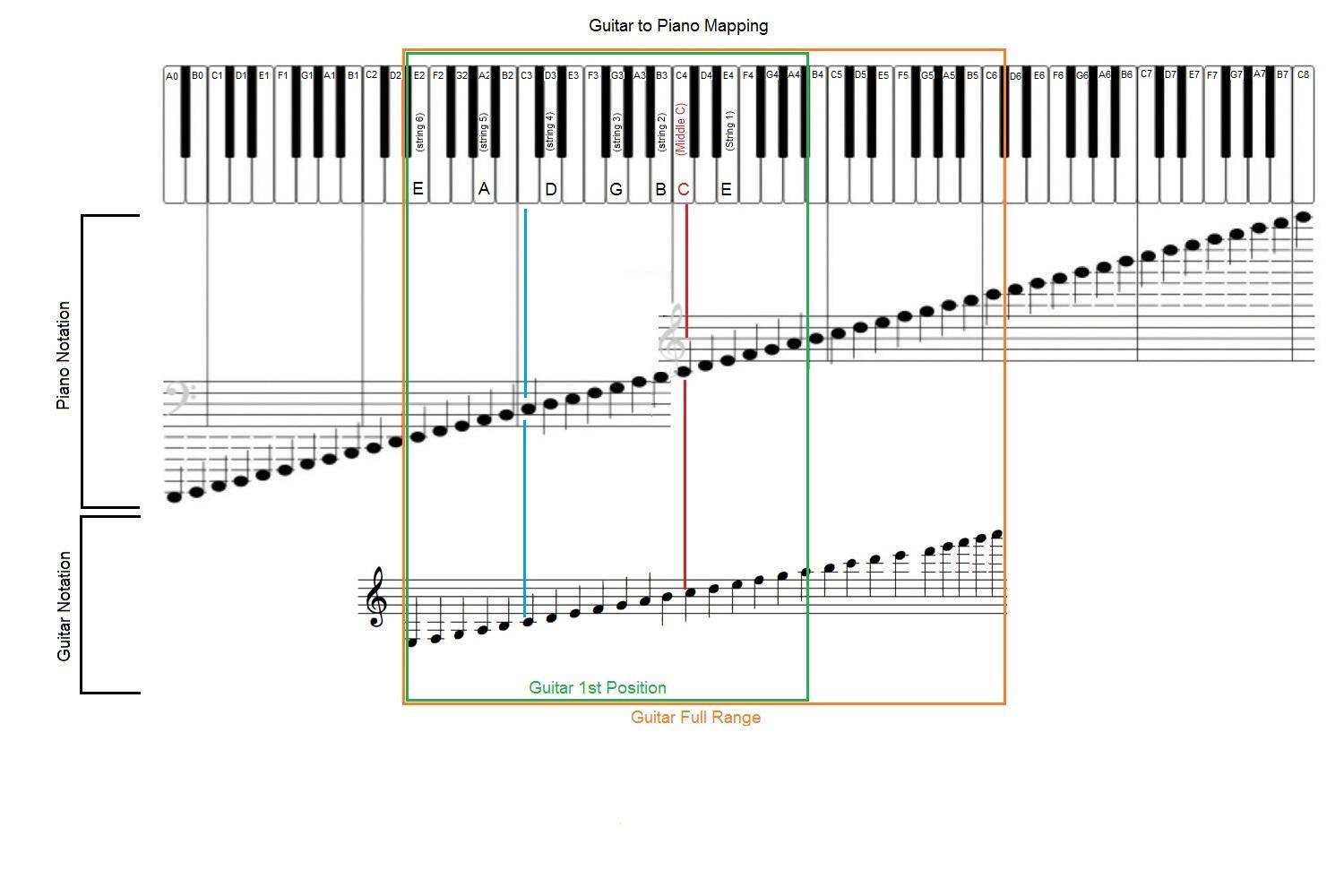Originally Posted by: dlwalkeMost electric guitars I'm familar with have something like 3-1/2 to 4 octaves. How do verbally identify them. Are the octaves numbered?[/quote]Yes, the octaves are numbered like any standard instrument. But there are 2 issues that make this difficult on the guitar: it's a transposing instrument & it's possible to play the same note in more than one place.
The low open E string corresponds in pitch to E2. The confusion on this issue is usually due to the fact that the guitar is written as a transposed instrument. See this chart.
Guitar notation is typically written an octave higher than it sounds at concert pitch compared to the piano (and other standard instruments). This means that the guitar is a transposing instrument, because its notes sound one octave lower than they are actually notated on a score.
The reason for this practice is because if the guitar was written on sheet music as actually pitched, then the pitch of middle C would be written in the bass clef! (Second space from the bottom to be precise.) And the bottom string E would be one ledger line below the entire bass clef.
In order to avoid having to read two staves (bass and treble), the music establishment decided to write guitar one octave up. This helps in one sense because rather than have to read two staves (bass and treble) like piano music, guitar is usually only written in treble clef.
The actual concert pitch middle C on a piano is the "industry standard"; and it is written on the "middle C", one ledger line below the treble clef (also one ledger line above bass clef in order to occupy it's very special place in music notation).
However, the piano is better written in two staves not only because it has a much wider pitch range (higher and lower). But more importantly, because it adds clarity to being able to clearly see two separate parts for two separate hands.
Originally Posted by: dlwalkeFor example, how would I refer to the G note on the 6th string 3rd fret as opposed to the G note on the 12th fret of the 1st string? For example, is it G1 and G4?I think you mean the 15th fret of the 1st string? 12th fret is E in standard tuning.
Anyway, the G at the 3rd fret of the 6th string (low E) is G2. The G at the 15th fret of the 1st string (high E) is G5.
[quote=dlwalke]I assume this is relevent to whether or not I should use a capo for a particular song and where to place it but I'm not sure I know how. My tentative guess is that I would find the lowest and highest sung notes of the song and then transpose the key, if necessary, such that they both fall between those 2 G's.
Yes, you have the basic idea correct! Hope this helps!
